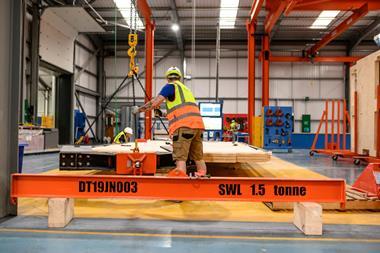A few years ago, the mainstream media became transfixed by the prospect of self-driving cars, when it seemed as if either Tesla or Google spin-off Waymo might imminently bring such a thing to market.

Coverage has since waned, illustrating how far we still are from an artificially intelligent car that might safely cope with human unpredictability on crowded roads.
One frequently raised question was why driverless cars were needed at all, given that people do okay behind the wheel. It’s a fair point, but one that betrays a failure of imagination. Usually, the question would come from someone keen on driving for themselves.
There are, of course, substantial groups of individuals who cannot drive, including people who’ve never learned, children (who can’t yet tackle the school run unaided), blind people and older people who may fear losing their independence if they lose access to personal transport. Every one of us is due to join the latter category at some point in the future.
It may not surprise you to learn that the average driver on UK roads is getting older. Government data from February this year reveals that 5.97 million of the 41.6 million full licence holders in the UK (about 14%) are 70 years old or over, while 1.65 million (4%) are 80 or older (up from 10% and 2.8% a decade ago).
Switch from cars to houses and there is, of course, a parallel presumption. Only instead of a few petrolheads neglecting their elders, we have society at large failing to address the dilemmas faced by older occupiers.
The older population faces stamp duty policies that dissuade downsizing, a government that has yet to launch any form of last-time-buyer incentive scheme and local authorities inclined against approving new retirement housing developments.
Our interview this week with Professor Les Mayhew addresses some of these hurdles in a constructive fashion, ahead of his appearance at our Later Living conference on 22 June.
I particularly liked the suggestion that residential properties should come with an age-friendly rating in the style of an Energy Performance Certificate (p7), according to how well or badly they might serve occupants with reduced mobility.
Returning to artificial intelligence (AI), we seem to have a new media fixation on its use in business. But it’s worth remembering an old computing adage: garbage in, garbage out. Any sign of intelligence in an AI system emerges from the sample data used to train it. Problems with the data will lead to unreliable outputs.
In 2018, the authors of a scientific paper on the use of AI in medical diagnoses warned of one unexpected outcome. An algorithm had been trained to spot malignant moles using images that often included a ruler for scale, and as a result the system determined that a ruler on the skin was a key sign of cancer. Not exactly a helpful contribution.
Similarly, the developers of the popular ChatGPT text AI system warn that its output is “often excessively verbose and overuses certain phrases”, both issues arising “from biases in the training data”.
AI systems, much like people, can struggle to think outside the box. Unlike AI, people can choose to stop, ask around, listen and then try harder to help our ageing population.
































No comments yet